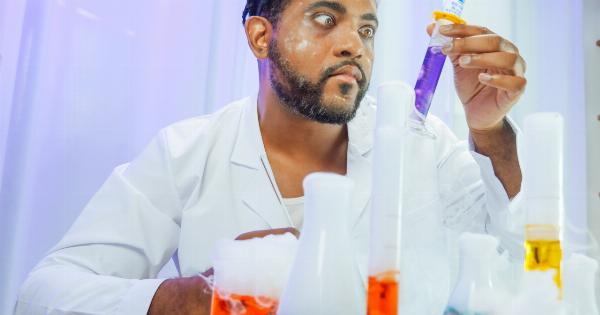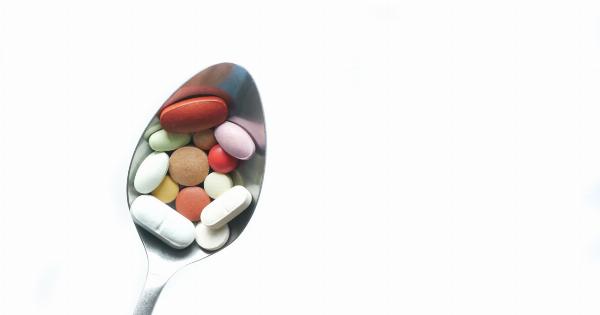Pregnancy is an exciting and special time in a woman’s life. It is essential to prioritize the health and well-being of both the mother and the developing baby during this period.
A crucial aspect of a healthy pregnancy is avoiding exposure to unsafe chemicals that can potentially harm the fetus. Chemicals are prevalent in our everyday lives, present in household cleaners, personal care products, and even in our food.
By being aware of potential risks and taking necessary precautions, pregnant women can minimize their exposure to harmful substances and create a safer environment for their baby.
1. Household Cleaning Products
Many conventional household cleaning products contain harsh chemicals and toxic substances that can be harmful to both pregnant women and their unborn babies. These chemicals include chlorine bleach, ammonia, and phthalates, among others.
When cleaning during pregnancy, consider switching to natural and non-toxic cleaning alternatives. Look for products that are labeled “green” or “eco-friendly,” or consider making your own cleaning solutions using simple ingredients like vinegar, baking soda, and lemon juice.
2. Personal Care Products
Personal care products such as cosmetics, skincare items, and hair products often contain potentially harmful chemicals like parabens, phthalates, and formaldehyde.
These chemicals can be absorbed through the skin and may pose risks to the developing fetus. To avoid exposure, choose natural and organic personal care products that are free from these harmful chemicals.
Look for brands that are specifically formulated for use during pregnancy or those that clearly state “paraben-free,” “phthalate-free,” and “formaldehyde-free” on the label.
3. Pesticides
Pesticides are commonly used in agriculture to control pests, insects, and weeds. However, exposure to these chemicals during pregnancy may be harmful.
Pregnant women should avoid handling pesticides or being in direct contact with areas recently treated with pesticides. To reduce exposure, choose organic produce whenever possible, or thoroughly wash fruits and vegetables before consumption.
Additionally, consider supporting integrated pest management (IPM) practices that aim to reduce pesticide use and rely on alternative pest control methods.
4. Food and Water Contamination
Food and water can be potential sources of exposure to harmful chemicals during pregnancy. Certain foods may contain high levels of mercury, such as certain types of fish, which can affect the baby’s developing nervous system.
It is advisable to familiarize oneself with the list of fish to avoid or limit consumption during pregnancy. Additionally, be cautious of water contamination. If you have concerns about the quality of your tap water, consider using a water filter that is certified to remove common contaminants.
5. Indoor Air Quality
Indoor air pollution can have a significant impact on maternal and fetal health. Many indoor products and materials release volatile organic compounds (VOCs), such as formaldehyde and benzene, which can be harmful when inhaled.
Ensure proper ventilation in your home by opening windows or using exhaust fans. When painting or redecorating, choose low-VOC or VOC-free paint and opt for formaldehyde-free furniture and flooring materials.
6. Cigarette Smoke and Secondhand Smoke
Both smoking and exposure to secondhand smoke are harmful to the developing baby. Smoking during pregnancy increases the risk of preterm birth, low birth weight, and developmental issues.
Additionally, secondhand smoke can also have adverse effects on the health of the mother and the unborn child. Pregnant women should avoid smoking and steer clear of places where smoking is permitted to protect the well-being of themselves and their baby.
7. Heavy Metals
Exposure to certain heavy metals such as lead and mercury can have detrimental effects on a developing fetus. Lead can be found in old paint, dust, and even some imported ceramics or pottery. Mercury is commonly found in certain fish and seafood.
Minimize exposure to lead by avoiding homes with peeling or chipping paint, and ensure good hygiene practices to reduce the ingestion of lead-contaminated dust. As for mercury, avoid fish known to be high in mercury, such as shark, swordfish, and king mackerel, and opt for lower mercury alternatives like salmon and shrimp.
8. Prescription Medications and Chemicals at Work
It is crucial to consult with a healthcare professional before taking any prescription medications during pregnancy. Some medications can pose risks to the developing baby.
Moreover, pregnant women should also be cautious of any potential exposure to chemicals at their workplace. If you work in an environment where you may come into contact with harmful chemicals, inform your employer about your pregnancy and inquire about any necessary precautions to ensure a safe working environment.
9. Hair Dyes and Hair Treatments
Chemicals present in hair dyes and hair treatments may potentially harm the developing baby.
While the research on this topic is limited, it is advisable to minimize hair dye use during pregnancy, especially during the first trimester when the baby’s organs are forming. Consider using natural alternatives or consult with a professional hairdresser who uses ammonia-free or low-chemical hair dye options.
10. Heat and Chemical Exposures
Excessive exposure to heat, such as from hot tubs, saunas, or prolonged sunbathing, is not recommended during pregnancy. High temperatures can increase the risk of birth defects.
Additionally, pregnant women should also avoid direct contact with strong chemicals like paint thinners, solvents, and pesticides. If exposure is unavoidable, ensure proper ventilation, wear protective gloves and clothing, and wash thoroughly afterwards.
Conclusion
Taking steps to reduce exposure to unsafe chemicals during pregnancy is essential for the health of the mother and the developing baby.
By being aware of potential sources of harmful substances and making informed choices, pregnant women can significantly reduce their exposure and create a healthier environment. Remember to consult with healthcare professionals, read product labels, and prioritize natural and non-toxic alternatives whenever possible.





























